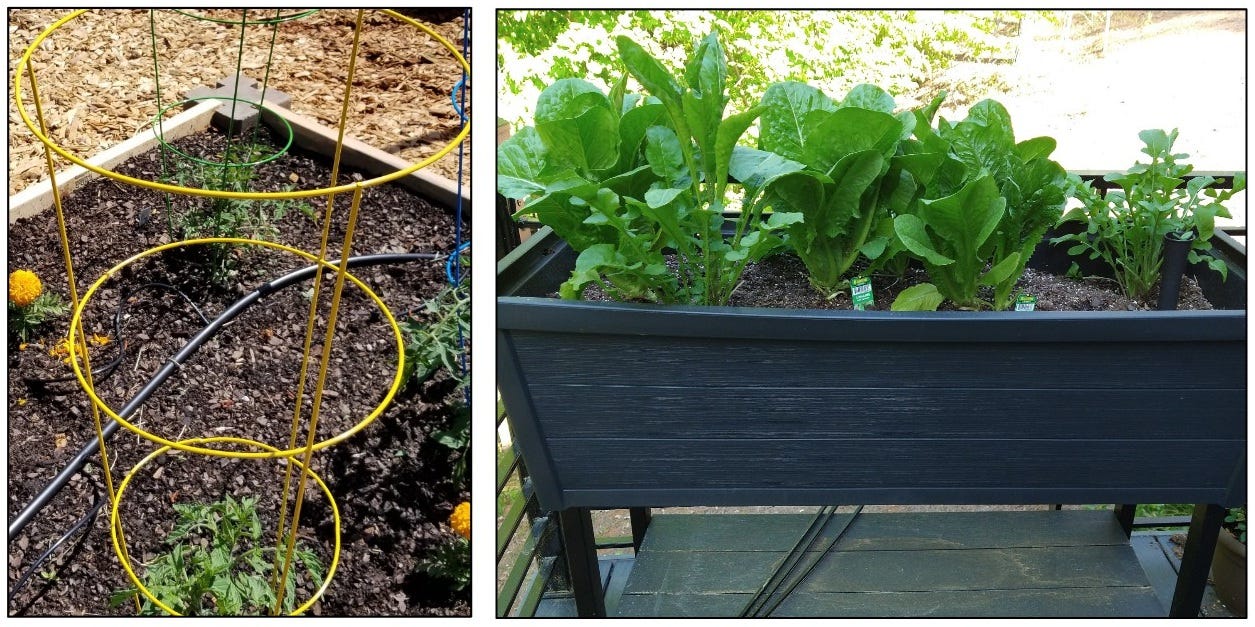Microplastics, Macro-guilt
My garden shows just how easy it is for contaminates to get into the soil, water and plants
As a gardener, I have come to realize that while I am a good steward of the Earth when it comes to avoiding harmful chemicals, I am a terrible offender when it comes to the use of plastics. When I grow plants, flowers and vegetables, plastics are a key player:
Lettuces grown in a composite-plastic planter
Tomatoes supported with powder-coated metal cages
Garden tools with plastic components
Landscaping fabric to deter weeds
Netting and fencing to block critters
Mulch, soil, manure and other soil amendments that come in bags rather than in bulk
Seedlings grown in cell trays
Plant markers
Irrigation lines, hoses, sprinkler heads and watering cans
So what happens when plastics are put to work in the garden? The proof is in the dirt.
Researchers analyzed samples of water, soil, organic fertilizer and potato plants on potato farms in Indonesia. Using Fourier transform infrared spectroscopy (FTIR), they were able to identify numerous types of microplastic contamination “in significant quantities.” The study, published late last year in the journal Environmental Quality Management, focused on potato farms in Indonesia, where farming practices and regulations likely differ from those in the U.S. But one takeaway is that you can’t necessarily see what’s in your soil.
A separate study, this one by Australian researchers, showed how microplastics can go from bad to worse as they degrade over time.
As part of their analysis, researchers looked at the use of landscaping fabric as a ground cover under a mulch bed. Using Raman spectroscopy to examine soil samples, researchers were able to identify fragments of polypropylene, one of the main components of landscaping fabric. Contamination levels are difficult to quantify, since both the landscaping fabric and the soil are black. But using spectroscopy with layered image mapping, researchers were able to see how landscaping fabric breaks down into microplastic fragments, which further degrade into nanoplastic fragments.
Overall, they concluded that “the release of microplastics in our garden is profound, either due to the wrongly discarded plastic items such as bubble wrap or due to the use of plastic items such as landscape fabrics as the mulch bed.” The findings were published in 2021 in Frontiers in Environmental Science.
With effort, I can avoid using some plastics—switching to a wood planter box and forgoing landscaping fabric, for example. Some things won’t be so easy. Mass-market garden stores offer few non-plastic alternatives to things like irrigation lines and seedling cell trays.
That will change as we learn more about the long-term effects of microplastics on the environment and the human body. But knowledge requires funding. Our understanding requires a significant investment in scientific research and a willingness to accept the results. You can’t DOGE the truth.






